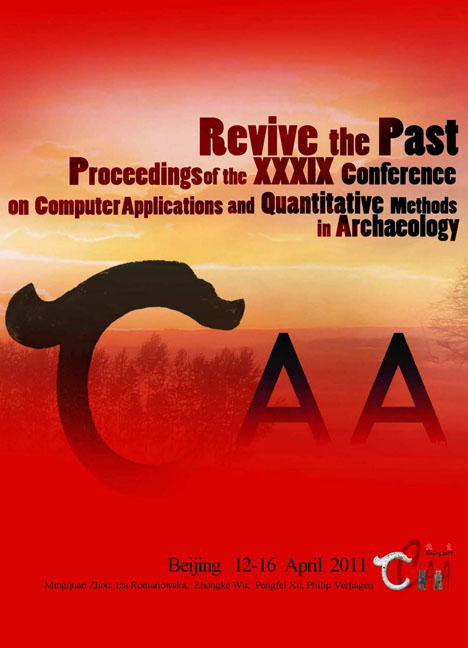 Revive the Past
Revive the Past Real-time Visualisation and Recording: Total Station, Rhinoceros and Termite
Published online by Cambridge University Press: 23 June 2021
Summary
Abstract:
Although perhaps appropriately categorised as an ageing technology, the total station still warrants a place among more advanced recording instruments; both from a consideration of practicality, but also because some recording tasks, for example ships, require the interpretative freedom offered by the manual total station. In order to optimise the process of total station recording, both in terms of efficiency and accessibility, facilities for visualising recorded data on a computer in real-time has long been available, albeit mainly through costly surveying software. This paper presents the Termite plug-in for the Rhinoceros 4.0 software, which adds this functionality to the inexpensive and widely adopted CAD platform. By enabling constant control with data quality and structure, as well as allowing analysis and editing during recording, post-processing requirements can be dramatically reduced. With a graphical interface for data manipulation, the set-up and operation of the total station is furthermore simplified significantly.
Key Words: Total Station, Rhinoceros, Data Acquisition, Ship Recording
Introduction
While technological innovation keeps opening new avenues of archaeological investigation, there nonetheless remains good sense – both economically and practically – in a continued effort to optimise the application of existing and established recording technologies. That there might be a financial incentive in extending the lifetime of ageing instruments, and thereby postponing new investments, is hardly a surprising idea. More than this, and perhaps less obvious, is the value of maintaining a varied methodological arsenal in spite of apparent obsolescence since, regardless of sophistication, some mature technologies still warrant serious consideration.
This paper will present a piece of software developed by the author, which is intended to provide a measure of optimisation to one such technology: the total station. The software is an add-on, or plug-in, for the increasingly popular Rhinoceros 4.0 CAD (computer-aided design) programme. The fundamental function of this plug-in, Termite, is to establish an interface between the virtual CAD environment and a connected Leica total station. This connection allows for a number of real-time operations between the two, and ultimately sharpens the capabilities of the total station as a primary tool for detail recording. The main features as well as some of the principal methodological advantages are outlined below.
- Type
- Chapter
- Information
- Revive the PastProceedings of the 39th Conference of Computer Applications and Quantitative Methods in Archaeology, pp. 65 - 69Publisher: Amsterdam University PressPrint publication year: 2012


